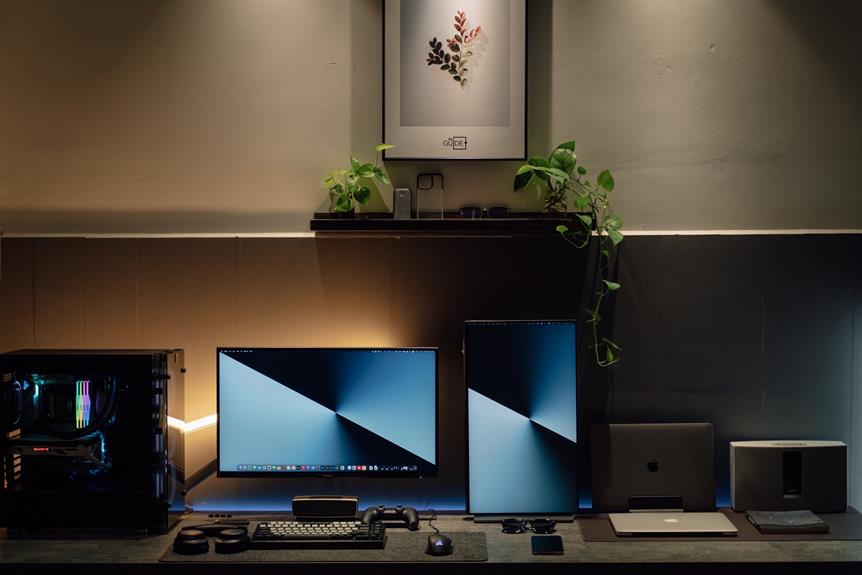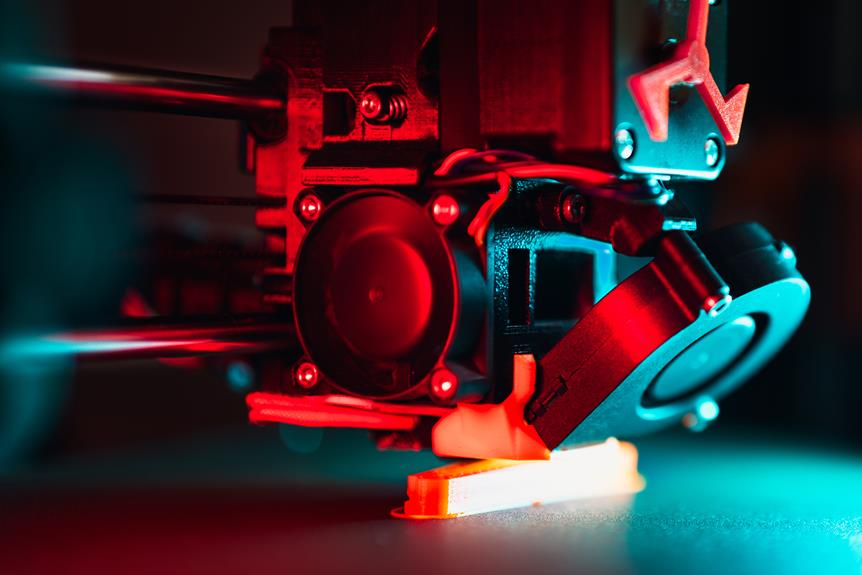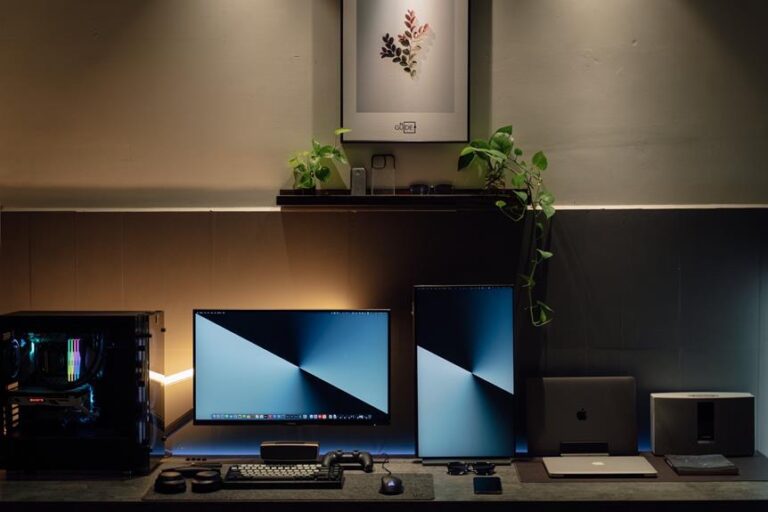Cloud-based 3D Printing Software: Design and Print Anywhere, Anytime
In the ever-evolving world of 3D printing, the convergence of cloud technology and design innovation has ushered in a new era of creative freedom.
With cloud-based 3D printing software, designers can now break free from the confines of traditional workstations and print their creations anywhere, anytime.
This article explores the benefits of this groundbreaking technology, from remote design capabilities to seamless print management, while emphasizing the crucial aspects of security and privacy in the cloud.
Join us as we delve into the future of cloud-based 3D printing software and its limitless possibilities.
Key Takeaways
- Cloud-based 3D printing software allows for the freedom to design and print from anywhere with internet access, eliminating the need for physical hardware and software installations.
- Collaboration on designs in real time with multiple users is made possible, allowing for diverse perspectives and expertise to be incorporated into the design process.
- Remote print monitoring and troubleshooting improve the efficiency of the printing process, while simplified file preparation and efficient management of multiple projects streamline workflow.
- The implementation of secure cloud infrastructure and encryption protocols ensures the protection of sensitive design files, while future innovations such as AI algorithms and VR/AR technologies continue to revolutionize the design and printing processes.
The Benefits of Cloud-Based 3D Printing Software
One of the key benefits of cloud-based 3D printing software is its ability to streamline the design and printing process. With this software, users have the freedom to design and print anywhere, anytime, as long as they have access to the internet. This liberating feature allows for greater flexibility and efficiency in the overall 3D printing workflow.
Cloud-based 3D printing software provides several advantages that contribute to its growing popularity. First and foremost, it eliminates the need for physical hardware and software installations, as everything is hosted and managed on the cloud. This not only saves costs but also enables users to access their designs and printing tasks from any device with internet connectivity.
Additionally, cloud-based 3D printing software offers collaborative capabilities, allowing multiple users to work on a design simultaneously. This promotes teamwork and enhances productivity, as team members can easily share and collaborate on projects regardless of their physical location.
Furthermore, the cloud-based approach ensures that users always have access to the latest software updates and features, without the need for manual installations. This ensures that users are always working with the most up-to-date tools, enhancing their overall design and printing experience.
Remote Design: Taking Your Creativity Anywhere
With cloud-based 3D printing software, you can now take your creativity anywhere and design remotely, no matter where you are in the world. Online 3D design software allows you to access your design files from any device with an internet connection, providing you with the freedom to work on your projects whenever inspiration strikes. This liberating feature enables designers and engineers to collaborate seamlessly across different locations, eliminating the need for physical meetings and reducing time constraints.
One of the key advantages of remote design using cloud-based 3D printing software is the ability to share and collaborate on designs in real time. Multiple users can work on the same project simultaneously, making edits, providing feedback, and refining the design as a team. This level of collaboration fosters innovation and creativity, as it allows for diverse perspectives and expertise to be incorporated into the design process.
Furthermore, cloud-based 3D printing software offers version control, ensuring that all team members are working with the most up-to-date design files. This eliminates the confusion and inefficiency that can arise from working with outdated versions of a design.
To illustrate the benefits of remote design using cloud-based 3D printing software, consider the following table:
| Benefits of Remote Design |
|---|
| Increased flexibility and freedom |
| Real-time collaboration |
| Enhanced creativity and innovation |
| Efficient version control |
Collaborate With Ease: How Cloud-Based Software Enhances Teamwork
Utilizing cloud-based software facilitates seamless collaboration, enhancing teamwork through streamlined communication and shared access to design files. Cloud-based 3D printing software, combined with online 3D design software, allows team members to work together on a project regardless of their physical location. With cloud printing platforms, team members can access and edit design files simultaneously, making real-time collaboration possible. This eliminates the need for constant file transfers and ensures that everyone is working on the most up-to-date version of the design.
Cloud-based software also enhances teamwork through improved communication. Team members can communicate through built-in chat features, allowing for instant feedback and discussion. Additionally, cloud-based software enables the creation of design workflows, where team members can assign tasks, set deadlines, and track progress. This ensures that everyone is on the same page and working towards a common goal.
Furthermore, cloud-based software provides a centralized repository for all design files and project information. This eliminates the risk of files being lost or misplaced, as everything is stored securely in the cloud. Team members can easily access and retrieve files whenever needed, promoting efficient collaboration and reducing downtime.
Seamless Print Management: Streamlining the Printing Process
Seamless print management is crucial in streamlining the 3D printing process.
One important aspect is remote print monitoring, which allows users to keep track of their prints from anywhere, ensuring efficiency and minimizing errors.
Additionally, cloud-based software simplifies file preparation, making it easier to convert and optimize designs for printing, further enhancing the overall printing experience.
Remote Print Monitoring
By enabling real-time monitoring of the printing process, remote print monitoring enhances efficiency and improves productivity for 3D printing operations. This feature is made possible through cloud-based 3D printing software and online design software, which allow users to remotely monitor their print jobs from anywhere at any time.
Here are three key benefits of remote print monitoring:
- Increased Visibility: Remote print monitoring provides users with real-time visibility into the status of their print jobs. They can easily track the progress of their prints and receive notifications when the job is completed or encounters any issues. This eliminates the need for physical presence near the printer and allows users to focus on other tasks while still keeping an eye on the printing process.
- Improved Troubleshooting: With remote print monitoring, users can quickly identify and address any issues that may arise during the printing process. If a print job fails or encounters errors, users can remotely diagnose the problem and take appropriate actions, such as restarting the print or adjusting printer settings. This saves time and reduces downtime, ensuring a smoother printing workflow.
- Enhanced Productivity: By enabling remote print monitoring, 3D printing operations can operate more efficiently and effectively. Users can manage multiple print jobs simultaneously, prioritize them based on urgency, and make informed decisions regarding resource allocation. This leads to better utilization of printers and materials, improved overall productivity, and faster turnaround times for completed prints.
Simplifying File Preparation
The integration of cloud-based 3D printing software simplifies the file preparation process, allowing users to easily prepare their designs for printing. With this technology, users no longer need to rely on complex and specialized software installed on their local machines. Instead, they can access the software through a web browser, giving them the freedom to design and prepare their files from anywhere, at any time.
Cloud-based 3D printing software provides a streamlined and intuitive user interface, making it easier for users to import, modify, and optimize their designs for printing. Advanced features such as automated repair tools and intelligent slicing algorithms ensure that the files are properly prepared for the chosen 3D printer. This seamless print management process eliminates the need for manual file manipulation and reduces the risk of errors, saving users valuable time and effort.
Furthermore, the cloud-based nature of this software allows for collaboration and file sharing among team members. Multiple users can work on the same design simultaneously, making it easier to iterate and refine the final product. The ability to easily share files with others also promotes knowledge sharing within the 3D printing community, fostering a sense of liberation and innovation.
Security and Privacy: Protecting Your Designs in the Cloud
How can you ensure the security and privacy of your designs when utilizing cloud-based 3D printing software?
- Encryption: Implementing strong encryption techniques is crucial to protecting your designs in the cloud. Encrypting your design files before uploading them ensures that only authorized parties can access and view the sensitive data.
- Access Control: Utilize robust access control mechanisms to restrict who can view, modify, and download your designs. Implementing role-based access control (RBAC) ensures that only authorized individuals have the necessary permissions to interact with your design files.
- Secure Data Centers: Ensure that the cloud-based 3D printing software provider uses secure data centers that adhere to industry best practices. This includes physical security measures, such as surveillance cameras and access controls, as well as logical security measures, such as firewalls and intrusion detection systems.
Future Innovations: The Evolution of Cloud-Based 3D Printing Software
As technology continues to advance, we can expect to see exciting advancements in cloud-based 3D printing software that will revolutionize the way we design and print objects.
The future of cloud-based 3D printing software holds immense potential for innovation and liberation. One key area of development is the integration of artificial intelligence (AI) algorithms into the software. This will enable the software to analyze and optimize designs automatically, resulting in more efficient and cost-effective printing processes.
Another significant advancement is the integration of virtual reality (VR) and augmented reality (AR) technologies with cloud-based 3D printing software. This integration will allow designers to visualize and interact with their designs in a virtual environment, enhancing the design process and enabling more accurate and precise modifications.
Furthermore, advancements in material science are driving the development of new materials that can be used in 3D printing. Cloud-based software will play a crucial role in managing and optimizing the printing parameters for these new materials, ensuring successful and high-quality prints.
Additionally, the future of cloud-based 3D printing software includes the potential for collaborative design and printing. With cloud-based platforms, designers and manufacturers can easily share and collaborate on designs, eliminating the barriers of physical location and enabling global collaboration.
Frequently Asked Questions
How Much Does Cloud-Based 3D Printing Software Cost?
The cost of cloud-based 3D printing software varies depending on the provider and the specific features and functionalities included. Factors such as licensing, subscription plans, and additional services may also influence the overall cost.
Can I Use Cloud-Based 3D Printing Software With Any Type of 3D Printer?
Yes, cloud-based 3D printing software is compatible with various types of 3D printers. This software allows you to design and print objects remotely, providing flexibility and convenience in the printing process.
Are There Any Limitations to the Size or Complexity of Designs That Can Be Printed Using Cloud-Based Software?
There may be limitations to the size or complexity of designs that can be printed using cloud-based software, depending on the capabilities of the 3D printer being used.
What Happens if There Is a Connection Issue or Loss of Internet Access While Using Cloud-Based 3D Printing Software?
If there is a connection issue or loss of internet access while using cloud-based 3D printing software, the user may experience disruptions in their workflow and may be unable to access or print their designs until connectivity is restored.
How Does Cloud-Based 3D Printing Software Handle Intellectual Property Rights and Copyright Protection for Designs Uploaded to the Cloud?
Cloud-based 3D printing software handles intellectual property rights and copyright protection by implementing robust security measures and encryption protocols to ensure the safety and privacy of designs uploaded to the cloud.
Conclusion
In conclusion, cloud-based 3D printing software offers numerous benefits such as remote design capabilities, enhanced collaboration, seamless print management, and improved security and privacy.
As the technology continues to evolve, the future of cloud-based 3D printing software holds promising innovations. According to a recent survey, 80% of businesses reported increased productivity and efficiency after adopting cloud-based 3D printing software.
This statistic highlights the tangible advantages of this technology and underscores its potential for further growth and development in the future.









